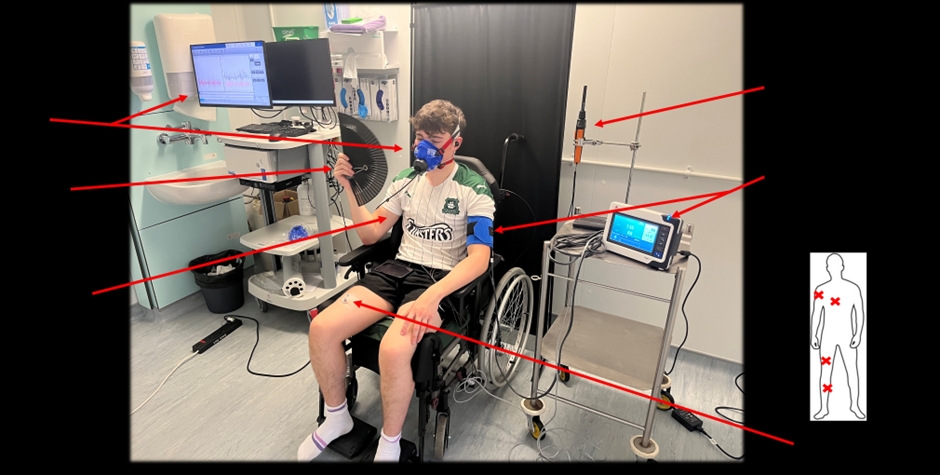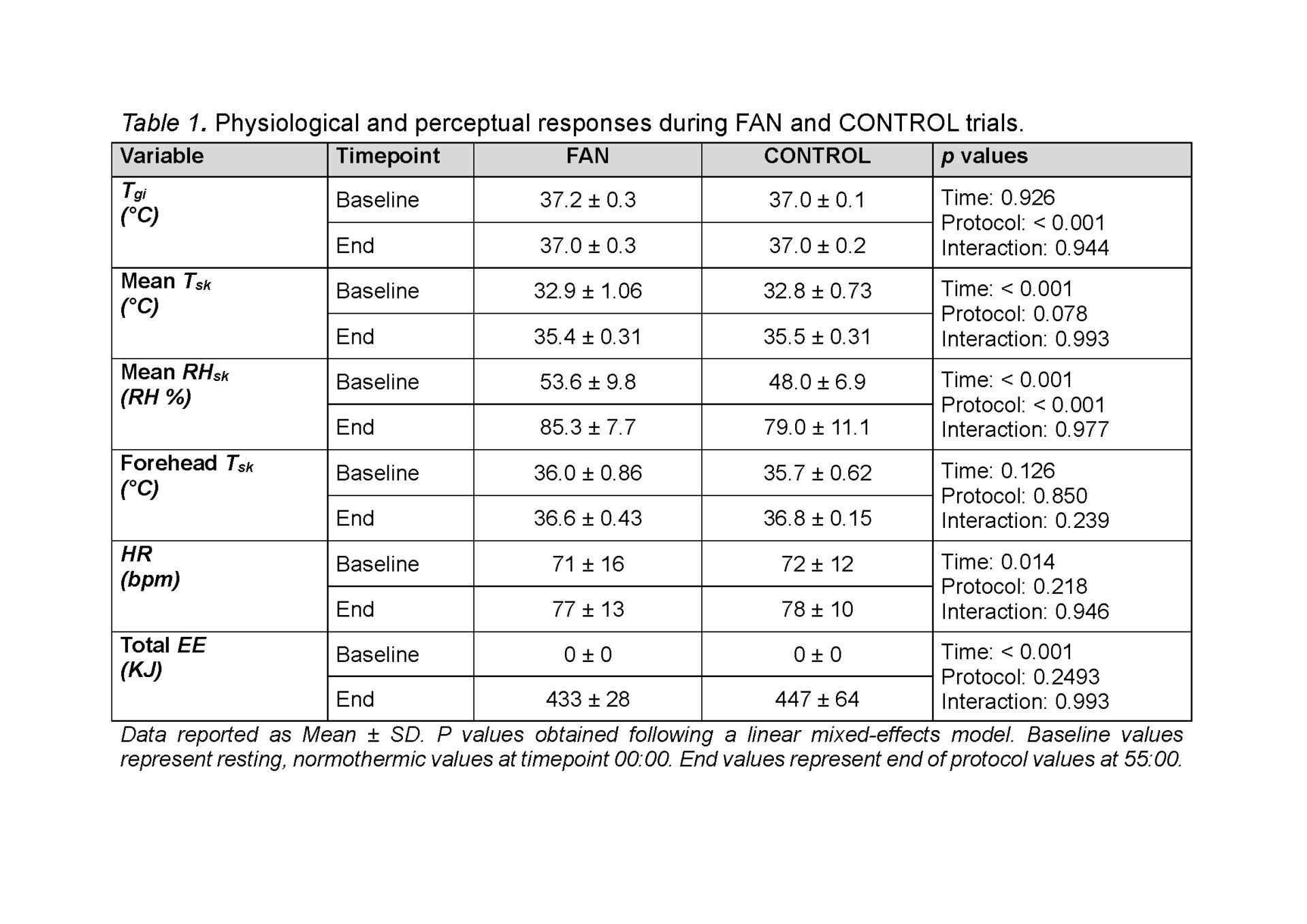Introduction
As global temperatures rise and extreme heat events increase in frequency and severity, there is an ever-growing need to better understand human heat tolerance and adaptation [1]. Behavioural thermoregulation represents humans’ first and most effective defence against heat. However, research on cool-seeking behaviours under ecologically-valid heat stress scenarios remains limited [2]. Humans have used manual self-fanning as a cooling intervention for millennia [3], although common (not-empirically-tested) beliefs suggest self-fanning could make one hotter [4]. This could be due to increased metabolic (work) heat production and limited convective cooling. This study aimed to determine the characteristics and energy expenditure (EE) of self-fanning as a cool-seeking behaviour in healthy young adults within a hot environment using a novel methodology.
Methods
Ethical approval was obtained from University of Southampton (ERGOII-72799). A convenience sample of 10 healthy males (20±1y; 78±9kg; 183±8cm) participated in two 55min trials (CONTROL and FAN) consisting of resting exposure to 37.0°C (±0.4°C) and 44% (±6%) relative humidity. In FAN, participants were given a hand-held fan (Figure 1) and instructed to use it freely to offset thermal discomfort. During CONTROL, no fan was provided. The fan was instrumented with an accelerometer (AX6, Axivity, UK) and data (25Hz) analysed (Matlab, Mathworks, USA) to characterise: onset of fanning; total duration of fanning; number of continuous fanning bouts (frequency); and fanning work rate. During both trials, an array of continuous measurements were collected including EE (via breath-by-breath gas analysis), gastrointestinal (core) temperature (Tgi), mean skin temperature (Tsk, 4 sites), forehead Tsk, microclimate (next-to-skin) relative humidity (RHsk, 4 sites), and heart rate (HR). Statistical analysis was performed via a linear mixed-effects model—using a Bonferroni correction factor for post hoc tests—and correlational tests. Data were reported as Mean±SD.
Results
Seven out of the 10 participants engaged with self-fanning. However, these participants displayed a heterogeneous use of this cool-seeking behaviour. Specifically, onset time (mean: 12:30 mm:ss [range: 00:49-30:19]), total duration (mean: 05:54 mm:ss [range: 01:04-17:53]), and fanning bouts (mean: 6 [range: 1-17]), displayed great individual variation. By contrast, work rate (mean: 308 strokes·min-1 [range: 205-362]) was consistent. The 7 participants who fanned presented no differences in total EE between FAN vs. CONTROL (433±28 vs. 447±64 KJ; p=0.993). We found no correlation between EE and total (self-fanning) duration (Pearson’s r=0.528; p=0.223). Furthermore, time-dependent changes in Tgi, mean Tsk, mean RHsk, and HR did not differ between trials (Table 1).
Conclusions
Our results indicate that, when given the opportunity to engage in cool-seeking behaviour, most of our healthy young participants (7/10) utilised self-fanning to offset thermal discomfort. Substantial individual variability exists in the onset and total duration of self-fanning. However, once engaged, this cool-seeking behaviour occurred at a consistent work rate. Importantly, self-fanning did not meaningfully increase EE, nor did it evoke greater increases in body temperatures than no fanning during heat exposure. Our study provides insights on the potential efficacy of self-fanning as a low-cost, accessible cooling strategy to support perceptual heat tolerance. It also showcases a novel quantitative approach to better study common cool-seeking behaviours under controlled laboratory settings.


